A Burgundy by Any Other Name: Hidden Value in Côte d’Or’s ‘Régionale’ Burgundy Ten Outstanding Producers in 6 Reds and 4 Whites (10-Bottle Pack $399)
Not all Burgundy is the stuff of legend, but all IS the stuff of Burgundy. That is, wine from a narrow strip of French farmland that runs for around sixty miles, from Auxerre in the north to Mâcon in the south, or to Lyon, if Beaujolais is included. But Burgundy is more than simply wine; it is a way of thinking. After many centuries of experimentation and the subsequent subdividing of vineyards based on family inheritance, mesoclimates, soil types and topographical features, modern Burgundy exists as a mosaic of fences, walls and property lines.
The most prestigious of these wines come from the 32 Grand Cru vineyards in the Côte d’Or; literally, the ‘Hills of Gold’, further subdivided into Côte de Nuits and Côte de Beaune. The top domains produce rarified wines with stratospheric price tags, but represent only about 2% of Burgundy’s total 70,000 planted acres. Most of the wine produced in the appellation is regional wine—a fourth tier (after Grand Cru, Premier Cru and Villages) that accounts for 52% of Burgundy’s total output. White wines making up about half of that; red wine accounts for 27%, Crémant 21% and rosé a drop in the bucket at 1%.
The seven appellations contained within the ‘régionale’ classification produce earthy wines available at down-to-earth prices and represent a more complete understanding of Burgundy’s overarching philosophy of terroir. As such, régionale wines don’t seek to compete with the superlative top-shelf Crus of the Côte d’Or, and better yet, many continue to fly under the radar.
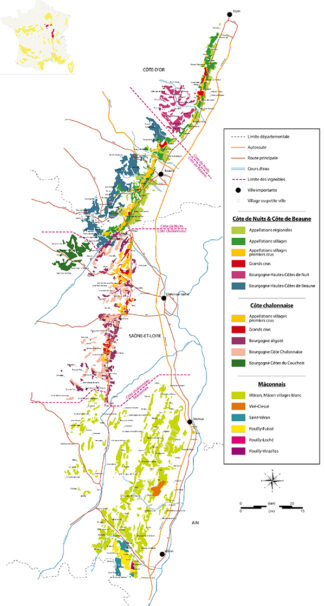
Bourgogne (Régionale Bourgogne)
So specific are the cru vineyards of Burgundy that ‘régionale’ vineyards may exist in the literal shadow of more renowned domains, occasionally separated by hundreds, or even as little as dozens of feet. Régionale Bourgogne wines tend to be culled from vineyards located along the foot of more prestigious wine-growing slopes on limestone soil mixed with some clays and marls, where the earth is stony and quick-draining.
Unlike Bordeaux, where classifications are based on individual châteaux (capable of buying other vineyards and expanding), Burgundian label classifications are more geographically focused. A single vineyard, therefore, may have multiple owners, each with a small piece of the action.
The ‘Bourgogne’ label first appeared in 1937, and in 2017, a further classification permitted wines from vineyards located within the Côte d’Or to be labeled as ‘Bourgogne Côte d’Or’; it’s a great tool for a consumer looking to explore the wide diversity of vineyard among the Hills of Gold while maintaining a terroir-focused, climat approach to Burgundy.
Bourgogne Rouge (Côte de Nuits)
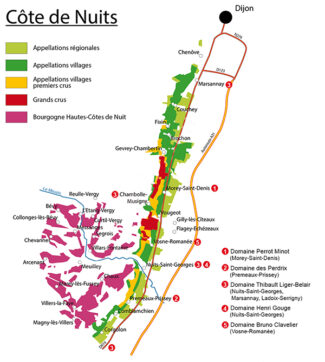
Domaine Perrot-Minot
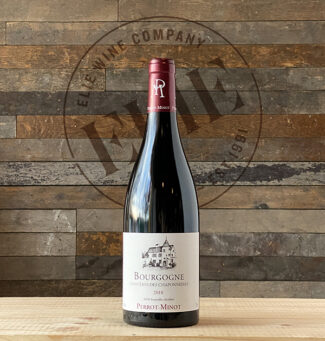 Domaine Perrot-Minot ‘Gravières des Chaponnières’, Bourgogne (Morey-Saint-Denis) 2018 Rouge ($69)
Domaine Perrot-Minot ‘Gravières des Chaponnières’, Bourgogne (Morey-Saint-Denis) 2018 Rouge ($69)
After spending seven years as a wine broker, Christophe Perrot-Minot became the manager of Domaine Perrot Minot in 1993. With him he brought deep and broad knowledge of the winegrower’s trade and firm convictions about what not only constitutes a great wine, but how to produce it. Among his many innovations has been a renewed focus on sorting during harvest and a goal of producing more elegant wines has been achieved through the use of less new oak in aging well as less extraction during fermentation, achieved (in Christophe’s words) by “using more ‘remontage’ (a gentle pumping over of fermenting wine) instead of ‘pigéage’ (vigorous punching-down of the grapes to draw more color and tannins). The domain includes vines in a considerable number of Premier Cru and Grand Cru appellations throughout the Côte de Nuits as well as two vineyards in the régionale appellation located in the town of Morey-Saint-Denis; a plot of 55-year-old vines and another about half that age. Bourgogne Gravières des Chaponnières shows cherry brandy, earth and graphite with chalky tannins and a savory tang.
Domaine des Perdrix
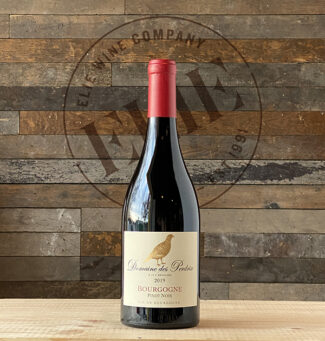 Domaine des Perdrix, Bourgogne (Premeaux-Prissey) 2019 Rouge ($43)
Domaine des Perdrix, Bourgogne (Premeaux-Prissey) 2019 Rouge ($43)
Perdrix (in English, the partridge that appears on the label) was taken over in 1996 by the Devillards, owners of Domaine du Château de Chamirey in Mercurey, Domaine de la Ferté in Givry, Domaine de la Garenne in Mâconnais and Domaine Rolet in Jura. Their régionale red is a blend of several plots of Pinot Noir located in Premeaux-Prissey planted between 1956 and 1965, and is treated with the same circumspection of their cru wines. Unlike Minot’s Bourgogne, pigéage punch-downs are employed in a quest for more, rather than less extraction. The wine shows lovely black cherry and raspberry up front and a slightly earthy undertone with moderate spice, mostly cinnamon and cola, and is crisply acidic on the finish
Domaine Thibault Liger-Belair
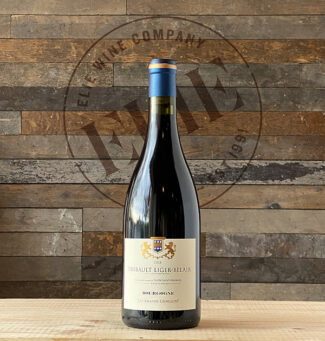 Domaine Thibault Liger-Belair ‘Les Grands Chaillots’, Bourgogne (Nuits-Saint-Georges, Marsannay, Ladoix-Serrigny) 2018 Rouge ($43)
Domaine Thibault Liger-Belair ‘Les Grands Chaillots’, Bourgogne (Nuits-Saint-Georges, Marsannay, Ladoix-Serrigny) 2018 Rouge ($43)
At the age of 26, having studied viticulture and oenology and put in six years with a communications firm in Paris, Thibault Liger-Belair gave in to his true passion and began to make wine. The following year (2002) represented his first harvest of Nuits-Saint-Georges, Nuits-Saint-Georges Charmottes, as well as Vosne-Romanée Aux Réas. Les Grands Chaillots is an assemblage of different terroirs; a third originates in his own Nuits-Saint Georges vineyards and the rest is purchased from various parcels Marsannay and Ladoix-Serrigny. Says Liger-Belair: “This wine is a little Chambolle-like in style. The palate is sweet and candied on the entry with blood orange fusing with red cherry/kirsch notes with good delineation on the finish.”
Domaine Henri Gouge
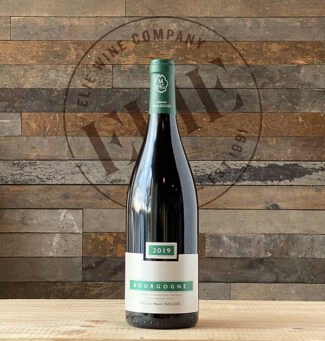 Maison Henri Gouge, Bourgogne (Nuits-Saint-Georges) 2019 Rouge ($38)
Maison Henri Gouge, Bourgogne (Nuits-Saint-Georges) 2019 Rouge ($38)
Domaine Henri Gouges has been a powerhouse in Nuits-Saint-Georges since the 1930s, and Gouges himself was tasked with delineating the crus in Burgundy for the Institut National d’Appellation d’Origine INAO. Today, the vineyard holdings of Domaine Henri Gouges cover 36 acres, including parcels in seven premier cru-designated sites, nearly all planted exclusively Pinot Noir. The wine displays pronounced intensity, with a nose showcasing strawberry, red rose, cured meat, gravel, underbrush and white pepper, finishing with crushed rock minerality.
Bourgogne Blanc (Côte de Nuits)
Domaine Bruno Clavelier
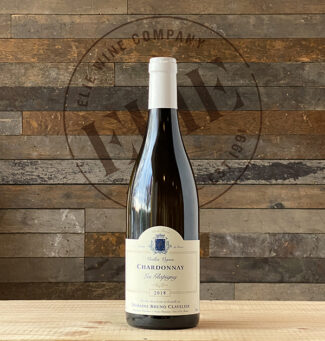 Domaine Bruno Clavelier ‘Les Glapigny’, Bourgogne (Vosne-Romanée) 2018 Blanc – Vin de France ($36)
Domaine Bruno Clavelier ‘Les Glapigny’, Bourgogne (Vosne-Romanée) 2018 Blanc – Vin de France ($36)
Bruno Clavelier made an odd if direct path from the rugby field to the wine cellar, taking over his grandfather’s estate in the 1980s. The gifted athlete has placed a premium on low intervention winemaking, with 20% whole bunches used and a vinification process that he considers ‘more an infusion than a maceration. There is no punching down and not much pumping over.’ He is more a student of geology than cellar technique. ‘Les Glapigny’ vineyard is planted with 70-year-old Chardonnay vines and straddles the boundaries of Vosne-Romanée. At a little over an acre, the vineyard sits of rich alluvial soil that does not reveal specific terroir, but rather is an expression of pure Chardonnay fruit with some additional oak backbone.
Bourgogne Rouge (Côte de Beaune)
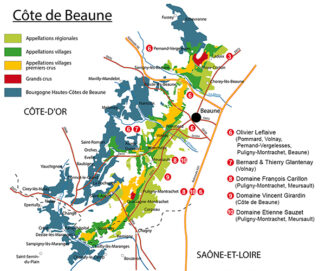
Olivier Leflaive
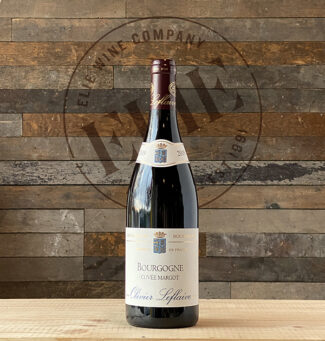 Olivier Leflaive ‘Cuvée Margot’, Bourgogne (Pommard, Volnay, Pernand-Vergelesses, Puligny-Montrachet, Beaune) 2019 Rouge ($38)
Olivier Leflaive ‘Cuvée Margot’, Bourgogne (Pommard, Volnay, Pernand-Vergelesses, Puligny-Montrachet, Beaune) 2019 Rouge ($38)
So renowned is the name Olivier Leflaive in Burgundy that no real bio is required. ‘Cuvée Margot’s’ winemaker, Franck Grux, was kind enough to share details of this wine, and further embellishment is unnecessary: “As usual, these grapes used in 2019 came from different classified vineyards through the Côte de Beaune; 30% from Pommard, 20% from Volnay and 20% from Meursault. Pernand Vergelesses contributed 15%, while a sector of Puligny gave us 10%; the rest came from Hautes Côtes de Beaune. They received one week of primary fermentation followed by two weeks of gentle cuvaison. The wine saw 15% new oak for one year and was bottled just before Christmas, 2020 without fining.” It shows refined nuances of black currant, red fruit, earth, spice, and alluring floral aromatics with remarkable complexity.
Bernard & Thierry Glantenay
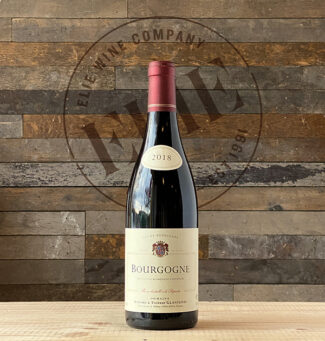 Bernard & Thierry Glantenay, Bourgogne (Volnay, Pommard) 2018 Rouge ($39)
Bernard & Thierry Glantenay, Bourgogne (Volnay, Pommard) 2018 Rouge ($39)
With fewer than twenty acres to their name, the father/son team of Bernard and Thierry Glantenay (with Thierry now at the helm) offer quality over quantity; the Volnays are ethereal and the Pommards powerful. Having trained as an engineer, Thierry is used to asking methodical questions and perfecting efforts with every vintage. As one of the Côte de Beaune’s rising stars, his wines are precise, focused, and most of all, reflective of their underlying terroir. His Bourgogne Rouge is satiny and succulent aromas of blackberry and raspberry give way to crunchy acidity and a generous core of fruit.
Bourgogne Blanc (Côte de Beaune)
Domaine François Carillon
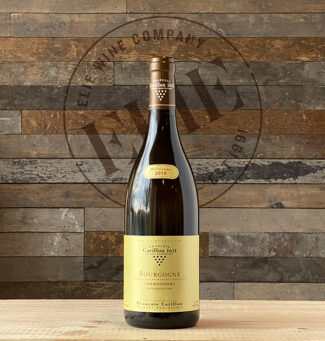 Domaine François Carillon, Bourgogne (Puligny-Montrachet, Meursault) 2019 Blanc ($29)
Domaine François Carillon, Bourgogne (Puligny-Montrachet, Meursault) 2019 Blanc ($29)
Although only created in 2010, the family of François Carillon has been in the wine business for 500 years. The winery is in the heart of Puligny-Montrachet, among Burgundy’s most renown terroir for white wines and sits on forty acres of prized land in Puligny-Montrachet, Chassagne-Montrachet and Saint-Aubin. The estate produces about seventeen (depending on the harvests) different appellations, mainly in Chardonnay. His Bourgogne is racy and engaging with tangy acidity, sweet pear and vanilla notes, integrated oak and a charge of acidity on the finish.
Domaine Vincent Girardin
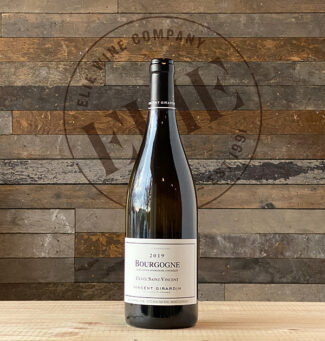 Domaine Vincent Girardin ‘Saint Vincent’ 2019 (Côte de Beaune) Blanc ($26)
Domaine Vincent Girardin ‘Saint Vincent’ 2019 (Côte de Beaune) Blanc ($26)
Based in Meursault, Vincent Girardin (the domain’s founder) originally farmed around 50 acres while acting as a négociant, buying fruit from growers who adhered to certain codes of practice, including higher trellising for better photosynthesis and avoiding the use of herbicides and insecticides. Vincent Girardin sold the business in 2012, but Eric Germain—his winemaker since the early 2000s—ensures that Girardin’s winemaking philosophy continues. The wine displays a plush core of lime with a backdrop of green apple, pears, pineapple and a creamy malolactic finish.
Domaine Etienne Sauzet
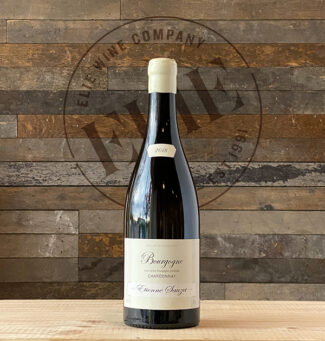 Domaine Etienne Sauzet, Bourgogne (Puligny-Montrachet, Meursault) 2018 Blanc ($36)
Domaine Etienne Sauzet, Bourgogne (Puligny-Montrachet, Meursault) 2018 Blanc ($36)
The original Etienne Sauzet bought thirty acres in the early part of twentieth century, and established himself as one of the leading producers in Puligny-Montrachet. Several generations and many subdivided acres later, the name still resounds throughout the region. Today, under the management of Emilie and Benoît Riffault, the estate is synonymous with superbly finished, full-bodied wines. The Bourgogne is a cuvée of fruit drawn from three family-owned estates, and shows a nose of gardenia blossoms and honeyed lychees wrapped around a core of minerality with peach notes and light oak tannins.
Côte d’Or 2018 Vintage Report
Referred to colloquially as ‘the Heatwave Summer’, 2018 began with an exceptionally wet winter, which left the water tables high. May flowering was ideal, but the long, dry summer months stressed younger vines while older, deeply-rooted cultivars were able to thrive. The challenge for growers was to manage ripening, which occurred much earlier than usual, and growers had to adapt to what some are referring to as ‘the new normal. “The whites have great tension and freshness, which I was not expecting,” says Dominique Lafon of Domaine des Comtes Lafon in Meursault. “The crop was big, and I think this helped to keep alcohol levels down. With a smaller crop there would have been a lot of heaviness.”
With reds, there was a bit more nuance, since Pinot Noir requires Goldilocks conditions to ripen correctly; left too long in the heat, they become jammy, without the freshness and finesse craved by connoisseurs of red Burgundy. Mathilde Grivot of Domaine Jean Grivot in Vosne-Romanée. “My entire family and the team worked in the vineyard to prolong the vegetative cycle.” She emphasizes that “to make a good Pinot Noir, you need to have to have the perfect maturity of the skin.”
Côte d’Or 2019 Vintage Report
In the words of the 18th-century Cistercian monk, Dom Denise, “In Burgundy, the best wines are produced in years when the harvest occurs in mid-September.” In 2019, a dry winter set the stage for a season where vines would suffer hydric stress, leading to low yields and small, thick-skinned berries. August and early September were cool and sometimes cloudy, although hot, sunny conditions returned for harvest; a dry north wind concentrated both sugars and acidities alike in the final weeks before picking began at the precise time that Dom Denise recommended. 2019’s wines, both red and white, tend to be rich and classical in profile, and Aubert de Villaine, a co-owner of the Domaine de la Romanée-Conti, points out a remarkable evolution: “We are convinced that the vines are adapting to warmer, drier years, and we find this very reassuring,”
- - -
Posted on 2021.12.11 in Marsannay, Côte de Beaune, Côte de Beaune, Ladoix-Serrigny, Vosne-Romanée, Pommard, Volnay, Côte de Nuits, Pernand-Vergelesses, Morey-Saint-Denis, Puligny-Montrachet, Premeaux-Prissey, Beaune, Premeaux-Prissey, Chassagne-Montrachet, Nuits-Saint-Georges, Meursault, France, Burgundy, Wine-Aid Packages
Featured Wines
- Notebook: A’Boudt Town
- Saturday Sips Wines
- Saturday Sips Review Club
- The Champagne Society
- Wine-Aid Packages
Wine Regions
Grape Varieties
Aglianico, Albarino, Albarín Blanco, Albarín Tinto, Albillo, Aleatico, Arbanne, Aubun, Barbarossa, barbera, Beaune, Biancu Gentile, bourboulenc, Cabernet Franc, Cabernet Sauvignon, Caino, Caladoc, Calvi, Carcajolu-Neru, Carignan, Chablis, Chardonnay, Chasselas, Clairette, Corvina, Cot, Counoise, Erbamat, Ferrol, Fiano, Frappato, Friulano, Fromenteau, Fumin, Garnacha, Gewurztraminer, Godello, Graciano, Grenache, Grolleau, Groppello, Juan Garcia, Lambrusco, Loureira, Macabeo, Macabou, Malvasia, Malvasia Nera, Marsanne, Marselan, Marzemino, Melon de Bourgogne, Merlot, Mondeuse, Montanaccia, Montepulciano, Morescola, Morescono, Moscatell, Muscadelle, Muscat, Natural, Nero d'Avola, Parellada, Patrimonio, Petit Meslier, Petit Verdot, Pineau d'Aunis, Pinot Auxerrois, Pinot Blanc, Pinot Gris, Pinot Meunier, Pinot Noir, Poulsard, Prieto Picudo, Rondinella, Rousanne, Roussanne, Sangiovese, Sauvignon Blanc, Savignin, Semillon, Souson, Sparkling, Sumoll, Sylvaner, Syrah, Tannat, Tempranillo, Trebbiano, Trebbiano Valtenesi, Treixadura, Trousseau, Ugni Blanc, vaccarèse, Verdicchio, Vermentino, Viognier, Viura, Xarel-loWines & Events by Date
- April 2024
- March 2024
- February 2024
- January 2024
- December 2023
- November 2023
- October 2023
- September 2023
- August 2023
- July 2023
- June 2023
- May 2023
- April 2023
- March 2023
- February 2023
- January 2023
- December 2022
- November 2022
- October 2022
- September 2022
- August 2022
- July 2022
- June 2022
- May 2022
- April 2022
- March 2022
- February 2022
- January 2022
- December 2021
- November 2021
- October 2021
- September 2021
- August 2021
- July 2021
- June 2021
- May 2021
- April 2021
- March 2021
- February 2021
- January 2021
- December 2020
- November 2020
- October 2020
- September 2020
- August 2020
- July 2020
- June 2020
- May 2020
- April 2020
- March 2020
- February 2020
- January 2020
- December 2019
- November 2019
- October 2019
- September 2019
- August 2019
- July 2019
- June 2019
- May 2019
- April 2019
- March 2019
- February 2019
- January 2019
- December 2018
- November 2018
- October 2018
- September 2018
- August 2018
- July 2018
- June 2018
- May 2018
- April 2018
- March 2018
- February 2018
- January 2018
- December 2017
- November 2017
- October 2017
- September 2017
- August 2017
- July 2017
- June 2017
- May 2017
- April 2017
- March 2017
- February 2017
- January 2017
- December 2016
- November 2016
- October 2016
- September 2016
- August 2016
- July 2016
- June 2016
- May 2016
- April 2016
- March 2016
- February 2016
- January 2016
- December 2015
- November 2015
- October 2015
- September 2015
- August 2015
- July 2015
- June 2015
- May 2015
- April 2015
- March 2015
- February 2015
- January 2015
- December 2014
- November 2014
- October 2014
- September 2014
- August 2014
- July 2014
- June 2014
- April 2014
- March 2014
- February 2014
- January 2014
- December 2013
- November 2013
- October 2013
- September 2013
- August 2013
- July 2013
- June 2013
- May 2013
- April 2013
- March 2013
- February 2013
- January 2013
- December 2012
- November 2012
- October 2012
- February 2004
Search



